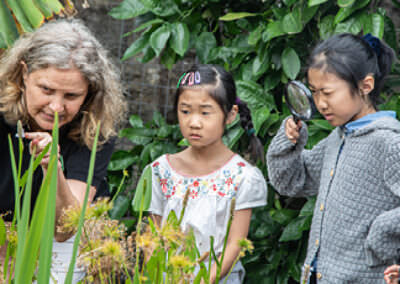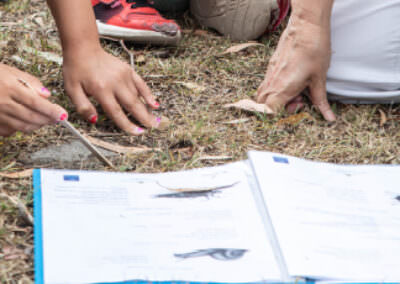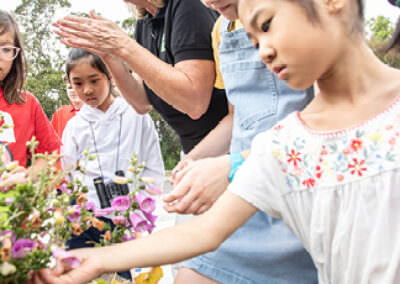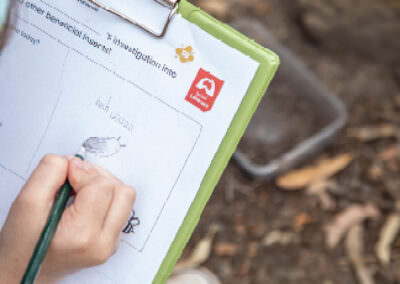
Getting the buzz on bees and other beneficial insects
Time Allocation: 30 - 40 minutes*
Activity Level: Easy
Introduction
To increase your chances of observing beneficial insects carefully consider the suitability of the observation site and the current conditions. Optimal conditions for bee observations:
- an area that is home to native and exotic flowering species
- area protected from strong winds
- an open sunny location
- a warm location with temperatures above 20⁰ C
- between 10am and 2pm when the flowers open up wide to invite the bees in.
*Time allocation will be dependent on site selection and travel time.
Checklist
Instructions
 Step 1
Step 1
Why bees matter: Discuss the important role bees play in pollinating flowering plants and shrubs. As pollinators bees carry pollen from flower to flower to help the flowering plants make seeds, reproduce and make new plants. Bees help to grow our food. Without pollinators such as bees, animals and humans would be without seeds, nuts and fruits to eat.
What makes other insects beneficial: Discuss the role insects play as decomposers, pollinators and as a food source for insectivores.
 Step 2
Step 2
Examine your chosen field guide with the children (device or printed version) prior to exploring outside. Point out a beneficial insect they are likely to observe and model how to use the field guide.
Outline safety aspects to the children, when observing insects.
- Be gentle and quiet observers. Do not touch any insects.
- Instruct how to use the garden trowels or spoons and paddle sticks or paintbrushes.
- Guide the children to tread lightly, taking care not to stand on anything living while exploring.
- Ask the children to return things back to how they found them, e.g. turned rocks or logs.
 Step 3
Step 3
Head outside to your observation site. Insects are everywhere but finding a spot near a garden bed or away from asphalt will allow children the opportunity to do some light digging.
Allow children time for ‘slow looking’ in a micro environment. Encourage the children to explore the site, carefully looking at different locations using their senses to lead them.
Carefully look at flowers to see if there are any active bees or other flying insects. Use the trowels or spoons to gently turn over the topsoil, bark, small rocks and leaf litter looking for ground dwelling insects. Using the paddle sticks or paintbrushes, attempt to move the insects into the plastic container to observe.
If the children are successful at spotting an insect, see if they can identify the insect using their field guide.
 Step 4
Step 4
Use the activity sheet to encourage the children to make careful observations and thoughtful interpretations during and after the activity.
You might like to take photos to capture your observations.
Extension Activity
Bees are most busy in spring; discuss why that might be so.
Discuss actions that you could take to attract native bees and other beneficial insects to your school or backyard. Watch this Gardening Australia clip with native bee researcher Kit Prendergast.